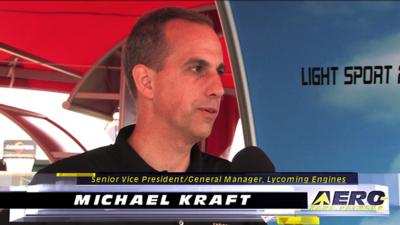Wed, Apr 01, 2015
Lycoming's Latest Innovative Technologies Unveiled In Surprise Announcement
ANN's April 1 "April Fool" Special Edition
Lycoming Engines is set to unveil its newest engine technology to the public today, designated the HHO-360-HCCH.

Driven by years of intensive research, the convergence of several advanced combustion and control technologies already incorporated in other Lycoming product lines, the need to migrate toward more environmentally friendly fuels, and the increased popularity emergence of Experimental aircraft, Lycoming has launched an engine that should start a revolution in the field of light aircraft propulsion and help re-engage people’s interest in aviation.
Not just an engine but also a hybrid electrical engine system, the core of the “engine” consists of a deep-cycle, fully rechargeable and renewable hydrocarbon battery in combination with a sodium ion saturated di-hydrogen monoxide fuel cell.

Work on the project dates back to the early 80s; however, the binary numeric reaction control technologies became feasible only in the last 10 years.
“It’s quite amazing how things can come together in such a short period of time,” stated Michael Kraft, Senior Vice President and General Manager of Lycoming. “Put a few of your brightest engineers in a locked room, take away their Xbox privileges, and slide them pizza under the door… it’s amazing what they can come up with.”

As it is primarily an electric machine, the introductory engine’s base rating is stated as 180 Mhos, with a reciprocal rating that is meeting some resistance in adoption by the regulators. Toxicity tests have been fully completed on the di-hydrogen monoxide fuel cell components, and while long-term corrosion effects are an engineering concern, the low-cost of the fluid is expected to outweigh any downsides. Lycoming is currently patenting the technology and giving credit to its engineering lead, Curley Larryfine. The patent firm of Dewey, Cheetum and Howe may be contacted for licensing arrangements.
More News
Aero Linx: Model Aeronautical Association of Australia MAAA clubs are about fun flying, camaraderie and community. For over 75 years, the MAAA has been Australia’s largest fl>[...]
Touchdown Zone Lighting Two rows of transverse light bars located symmetrically about the runway centerline normally at 100 foot intervals. The basic system extends 3,000 feet alon>[...]
“Discovery and innovation are central to our mission at Virgin Galactic. We’re excited to build on our successful record of facilitating scientific experiments in subor>[...]
How To Get A Story On Aero-TV News/Feature Programming How do I submit a story idea or lead to Aero-TV? If you would like to submit a story idea or lead, please contact Jim Campbel>[...]
Student Pilot Reported That During Rotation, “All Of A Sudden The Back Of The Plane Kicked To The Right..." Analysis: The student pilot reported that during rotation, “>[...]
 ANN's Daily Aero-Linx (05.02.24)
ANN's Daily Aero-Linx (05.02.24) ANN's Daily Aero-Term (05.02.24): Touchdown Zone Lighting
ANN's Daily Aero-Term (05.02.24): Touchdown Zone Lighting Aero-News: Quote of the Day (05.02.24)
Aero-News: Quote of the Day (05.02.24) ANN FAQ: Contributing To Aero-TV
ANN FAQ: Contributing To Aero-TV NTSB Final Report: Cirrus Design Corp SR20
NTSB Final Report: Cirrus Design Corp SR20





